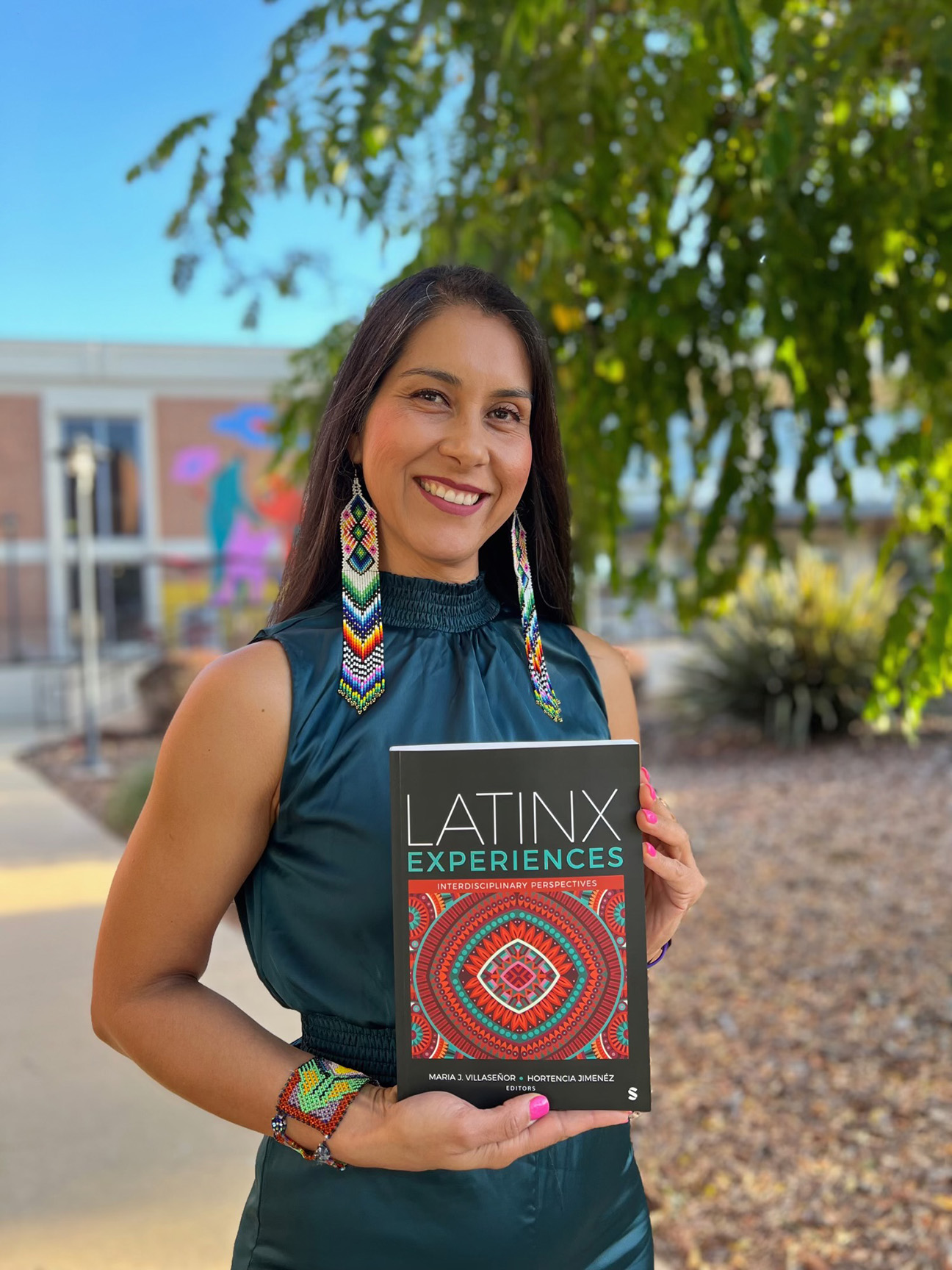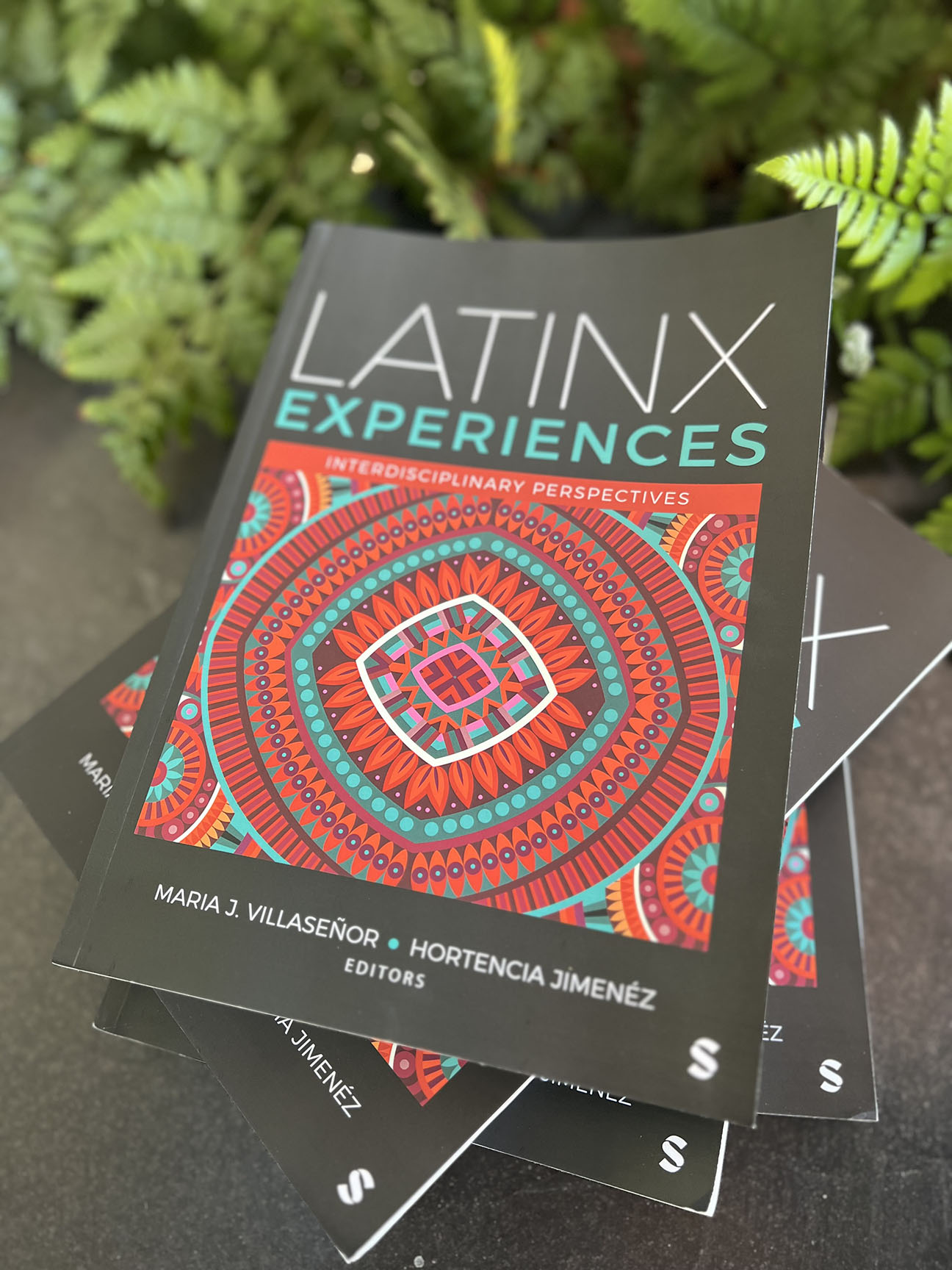| FEATURES
By Claudia Meléndez Salinas
Looking at a dearth of accessible textbooks reflecting the diversity of Chicano/Latino/Mexican American/Latinx lives, two local professors set out to write one.
María J. Villaseñor, a Chicanx/Latinx Studies professor on leave from California State University Monterey Bay, and Hortencia Jiménez, a sociology professor at Hartnell College, are fresh from publishing “Latinx Experiences: Interdisciplinary Perspectives” (Sage Publications, 2023).
“We saw a big need, a big gap in academia, of having an accessible book that can represent the diverse experiences of our communities, but also (include) interdisciplinary perspectives. And that’s where that idea came about,” Jiménez said in a recent video conference.
The hefty tome of 504 pages, 42 chapters and 55 contributors took over two years to complete and explores a wide variety of topics concerning Latinx in the United States (more on the term below).
From the “racialization of Latinidad” — because Latinx are also white, Black, Indigenous, etc. — to the Guatemalan enclave in Los Angeles Koreatown, to the work of empacadoras (packing workers) in the Salinas Valley, the book is like a prism through which many aspects of Latino life are examined.
Villaseñor and Jiménez spoke with Voices co-founder Claudia Meléndez Salinas about the book. The interview was edited for clarity and length.
Enlarge

VOMB: The term Latinx has not really reached mainstream yet. Can you talk briefly about why this term? Why not Latinos or Hispanics?
Jiménez: Even Sage (editors) reached out to us a bit toward the end of the process, like, “Are you sure you want to use Latinx? Do you want to move to Latines?”
We feel more comfortable with Latinx than Hispanic. We really want to move away from these binaries, Latino, Latina. We want to really capture the diversity, the gender spectrum … using Latinx honors that — the gender spectrum, the gender diversity, gender fluidity. We understand the criticisms, the folks who don’t align with this label. We just felt that it embodied that diversity, the diversity of Latinx communities.
Enlarge

Villaseñor: Right now I’m finishing, with Christine Fernández from CSUMB, editing a book called “The Routledge Handbook to Latinx Life Writing.” And so again, we had an opportunity to have this conversation.
Latinx emerged as an alternative to Latino and Latina as our country was saying to be with the idea of including gender nonbinary people, people that identify outside the binary. I remember having conversations with students about it, and them asking me sometimes, “What percentage of people identify as nonbinary? Like, are you really going to … change the whole word just because there’s a few people that don’t identify within the binary?” Well, yeah, that is the nature of the work, right?
If you’re thinking about being radically inclusive, then you don’t just go with what the majority (does) but when you think about who are the most vulnerable, who are the most marginalized, who are the people who are the least represented, and in our community is people that don’t identify (as either male or female). I do understand that not that many people use it. And maybe Latine is better or some other way is better. The terms are in flux, things change. And really, language is imperfect.
VOMB: In the introduction you write about the complexity contained in the word Latinx to define groups of people with vast differences in race, ethnicity, class, social status, etc. In the putting of this book together, did you find yourself disentangling the notion of Latinidad or was that even the intent of the book?
Villaseñor: We were not necessarily seeking to disentangle the notion of Latinidad, but to show the diversity of our experiences that are reflected in that word. There are people that don’t like any of the words, they don’t like Latino, Latina. Latinx, Latine, because they’ll say I’m Black from Costa Rica, and this doesn’t … capture my identity. We have a lot of respect for people who would choose not to identify that way, but at the same time there are things that we have in common in terms of our experience with racialization in this country.
There are commonalities that we share, and points of convergence, even if there’s lots of differences, so we wanted to choose that. Not to disentangle it. We were trying to show the spectrum and diversity of our experiences by using that word as like a container.
"We were not necessarily seeking to disentangle the notion of Latinidad, but to show the diversity of our experiences that are reflected in that word." María J. Villaseñor, Chicanx/Latinx Studies professor, California State University Monterey Bay
VOMB: In the last couple of years, the country has been fed constant images of mostly Central American migrants attempting to cross the U.S.-Mexico border, describing it as an immigration crisis. But in the introduction, you call it a refugee crisis. Could you briefly describe what’s the difference?
Villaseñor: To me, when I hear the word immigrant, part of the implication is choice. Like I immigrated to this country because I had a choice to come here. My mother is a good example of somebody who actually did immigrate to this country because she was coming to marry my father. She did not have to leave her home. She lived there with her parents, but she immigrated to this country as a choice. And there is a big difference between immigrants who come here … by choice, because choice is a privilege, as opposed to when you’re a refugee. You come here out of necessity.
Many of these people leave because they’re starving. They’re in danger. It’s much more comfortable to stay at home with your friends and your community and your family. And when you take that big step too, a lot of these folks are coming with their kids. Dragging their little kids to these incredibly dangerous situations. People are not immigrants. Also, refugees is the legal designation. Refugees have a right to apply for refuge and asylum. So that’s another reason I think that’s an important distinction.
Jiménez: It also places some level of responsibility to countries like the United States and the policies they have in Latin America and other countries. It’s really naming these social, economic and political factors that make people leave their countries instead of (making it about) choice. Because even that choice is oftentimes shaped by their economic circumstance.
VOMB: Chapter 41 is called “Latinx food cultures and identities.” What’s the story behind writing this chapter, Hortensia?
Jiménez: I love food. I love food and I’m frustrated by wellness experts, foodies, chefs who culturally appropriate our foods yet use anti-immigrant discourse to talk about Latinx communities, that just doesn’t align. I really wanted folks to understand that food is more than something that we consume. If you’re a refugee or an immigrant and you’re far away from your home, and you can’t go back, what connects you to your homeland? And it’s cultural traditions.
I wanted to say that but also say, look, food is also racialized. We have to look at this history and specifically if we look at the history between Mexico and the United States, it has been a violent history, a history of displacement, of violence, a history that treated Mexicans as second-class citizens and their foods as well. And even before that, when the Spanish arrived and how they viewed our foods as inferior, the Spanish placed Indigenous foods in a hierarchy right, in a moral hierarchy.
And diet culture today, informed by white supremacy, uses that rhetoric and I wanted to say that … to understand the current conversations of wellness or diet culture, we have to look at this racialized history.
"We feel more comfortable with Latinx than Hispanic. We really want to move away from these binaries, Latino, Latina." Hortencia Jiménez, sociology professor, Hartnell College
VOMB: There’s a chapter called “Radical self-love: a spiritual visionary, everyday practice to resistance by Latina women.” I’m intrigued by the first line, “arriving at this work as a chillona (crier). Tell me about that chapter.
Villaseñor: Part of the larger point is, a lot of these forces that we’re talking about — racism and classism, and sexism, and people get criticized and demeaned for sensitive or being chillonas.
For years I’ve talked about being part of team “chingona y chillona.” Part of why that’s meaningful to me is because those of us who are chillonas y chingonas, we have to create that space for ourselves. Because this is not Latinx culture. This is white culture. There’s this idea that to be a chingona is not to be chillona. You have to not show your feelings, right.
So, are you going to come to this world to kick ass, or are you going to come to this world and be soft and have your feelings? And the chapter is really talking about how (the author’s) subjects, the women she interviewed, how they use their emotions, partly as a way to draw strength and reinforce their resilience. That’s breaking through that dichotomy of, you’re either strong or you’re sensitive. Her argument is about dismantling that and prioritizing self-care, caring for yourself, caring for your feelings.
Jiménez: I feel that that’s the hope in academia, that the more that we show up with our sensitivity with our vulnerable self, that’s part of decolonizing education, decolonizing academia and this chapter is doing that and in many ways, is giving students to show up that way.
For me, at a personal level, how can I, as a professor, embody that? How can I embody that radical love is by showing myself in my essence and my vulnerability with students, to show up when I’m fragile, when I feel vulnerable, when I feel sad, and by doing so, I am disrupting white supremacy. I am disrupting professionalism because we can’t show up like that.
We’ve been conditioned in academia that you’re the professor, you have to be professional and being professional is suppressing your feelings. Go and rationalize the content. And I challenge my students and I say, you’re gonna be triggered by these readings, or this where you might be angry, you may feel a rage, but I name the feelings that they may experience and they know it’s OK to normalize them and to process them. And that I hold space for that in class.
VOMB: What would you like your readers to come away with? And what is your hope for this book?
Jiménez: For me, that Latinos are not a homogeneous group. We are very heterogeneous, very complex, multi-dimensional, messy human beings. We’re beautiful, do not box us. And recognize the contributions we continue to make to the United States.
Villaseñor: My hope for the book is that students read it and like it, and learn from it … These chapters are great, we put a lot of time and thought into having it be a book that students would want to read. I hope that there are students who read it and learn from it. That we as a people have experienced a lot of hard things in this country, racism, sexism, classism, you name it.
But we are resilient, and beautiful. That’s what I want people to walk away with, too.
Enlarge

| Provided photo
Have something to say about this story? Send us a letter.